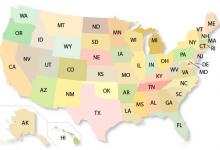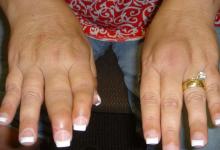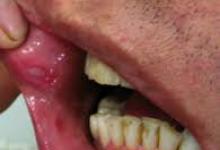FDA Panel Votes 10-4 to Approve Lesinurad for the Treatment of Hyperuricemia/Gout Save

Despite concerns over safety, the FDA Arthritis Advisory Committee voted favorably to approve lesinurad (LES) at a meeting held Friday, October 23, 2015. Overall, panel members felt the potential benefits of LES outweighed the safety concerns reviewed by the FDA presenters.
Astra-Zeneca presented its application for the approval of LES for the treatment of hyperuricemia associated with gout. The application was largely based on studies of LES in combination with a urate-lowering therapy (ULT) in 3 phase III trials (CLEAR1, CLEAR2 and CRYSTAL studies) and study 304, a 400 mg monotherapy LES study. The FDA and sponsor briefing documents are publically available.
The panel discussed the issues posed to them by the FDA (full agenda can be found here).
After presentations by the sponsor and the FDA, the committee considered and voted on the following three questions:
- Overall, do the data provide substantial evidence that lesinurad provides a clinically meaningful beneficial effect in the treatment of hyperuricemia associated with gout, in combination with a xanthine oxidase inhibitor? (VOTING RESULTS: 14-0 in favor of LES)
- Is the safety profile of lesinurad adequate to support approval of lesinurad for the treatment of hyperuricemia associated with gout in combination with a xanthine oxidase inhibitor? (VOTING RESULTS: 7- yes; 6-no; and 1 abstained)
- Do you recommend approval of lesinurad for the proposed indication of treatment of hyperuricemia associated with gout in combination with a DRAFT xanthine oxidase inhibitor? (VOTING RESULTS: 14-0 in favor or LES)
The voting on Question #1 (Does the data show meaningful (substantial) clinical benefit for LES 200 mg qd in combination with XOI in the treatment of hyperuricemia?) unanimously favored the efficacy of the LES 200 mg qd dose. Many panel members thought the results were clinically meaningful and that the decreases in serum uric acid (SUA) were “clear... although modest” and would likely yield clinical benefits. Many did not like the term “substantial” in the question, but still voted in favor of the efficacy of LES.
The voting on Question #2 (Is the safety profile of lesinurad adequate to support approval of lesinurad for the treatment of hyperuricemia associated with gout in combination with a xanthine oxidase inhibitor?), resulted in 7-yes, 6-no votes and 1 abstention. The panel was split in their concerns regarding the safety data (see below), especially for SAE, renal effects, and MACE events. Some thought the dose recommended by the manufacturer (200 mg qd) was not that dissimilar to the placebo-treated patients. Others felt that that the safety concerns established by the FDA merited longer study or that the data presented was insufficient to establish the safety of LES. Many were concerned over the drugs narrow therapeutic index with a recommended efficacy dose (200 mg) being the same as the maximum safety dose.
The voting on Question #3 (Do you recommend approval of lesinurad for the proposed indication of treatment of hyperuricemia associated with gout in combination with a DRAFT xanthine oxidase inhibitor?) was mostly in favor of LES approval (10-yes; 4-no votes), with some residual concern about the drug’s safety. The panel members recommended long-term extensions and safety studies (including patients with comorbidities), studies to examine split dosing.
At issue is whether there is an unmet need in the management of gout patients and whether LES fulfills that need. Since the introduction of allopurinol almost 50 years ago, the vast majority of patients are prescribed 300 mg daily. Even though allopurinol is approved for doses up to 800 mg qd, less than 4% of patients receive doses greater than 300 mg. With such limited prescribing, the majority (40%-70%) do not achieve, nor sustain (50%-80%) target sUA levels of 6mg/dl. Febuxostat 40 mg is equal to allopurinol 300 mg and febuxostat 80 mg is superior to allopurinol at achieving sUA 6 mg/dL. Unfortunately, nearly half of patients on febuxostat do not achieve sUA 6 mg/dL. The current ACR guidelines for gout recommend the addition of an agent that increases urinary uric acid excretion if patients do not achieve target sUA on xanthine oxidase inhibitors alone.
Lesinurad inhibits the function of multiple carrier proteins that transport uric acid in the renal proximal tubule epithelium, including Uric Acid Transporter 1 (URAT1) and Organic Anion Transporters (OAT) 1, 3 and 4.
Caveats from the presentations:
- The development program was large, 41 clinical studies, involving a total of 2587 patients exposed to LES as of November 2014. More than 1800 gout patients were exposed; 949 received the 200 mg qd dose.
- CLEAR 1 and CLEAR 2 studies evaluated LES 200 mg and 400 mg qd compared with placebo as add-on therapy to allopurinol in patients who had not achieved sUA target levels while on a physician-determined medically appropriate dose of allopurinol.
- CRYSTAL evaluated LES 200 mg and 400 mg qd versus placebo in combination with febuxostat 80 mg in patients with tophaceous gout. Study 303 evaluated LES 400 mg qd monotherapy versus placebo in patients with gout who were intolerant of or had a contraindication to an XOI.
- Overall, these 12 month studies failed to show that LES had significant clinical benefits, reduced flare rates, tophi resolution or improved physical function. .
- Serious adverse events (SAE) were higher in LES treated patients (in dose dependent manner) - highest SAE were seen in the LES 400 mg qd dose groups.
- The 400 mg exposed patients also noted more myalgias, back pain, and renal effects. LES pts had more SAE, more discontinuations from the trial for SAE, and more deaths.
- 6 Deaths were seen in LES exposed patients (4 CV events; 1 gastric cancer, 1 unknown). Types of deaths were typical of this study population. LES deaths were low overall but were higher than the placebo population.
- Monotherapy Study 304 - 400 mg LES dose was associated with higher rates of renal dysfunction. Thus, there was a dose-dependent effect on creatinine elevations. Reversible and nonreversible creatinine elevations and renal insufficiency was observed. Not all creatinine elevations were resolved by end of study (12 mos.). Two cases of renal dialysis and several cases of nephrolithiasis were seen with the highest LES doses.
- MACE events in LES patients were not increase compared to placebo patients, but were higher in the LES 400 mg qd patients.
Overall, the Arthritis Advisory committee voted in saying there was more (potential) benefit than harm given the data presented. The FDA has not ruled on this application and will review the meeting discussions for weeks/months before announcing its decision.










If you are a health practitioner, you may Login/Register to comment.
Due to the nature of these comment forums, only health practitioners are allowed to comment at this time.